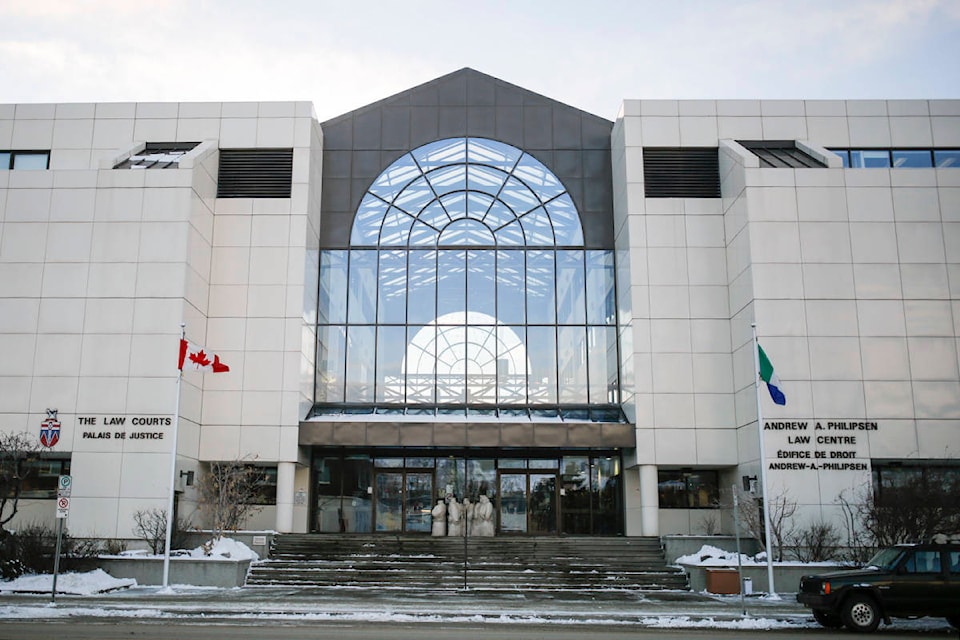Two former Whitehorse Correctional Centre inmates have filed a class action against the jail, corrections officials and Yukon government on behalf of everyone who’s been placed in two restrictive units over the past six years.
Ray Hartling and Mark Lange, in a statement of claim filed to the Yukon Supreme Court on Oct. 20, allege that people placed in the jail’s former secure living unit (SLU) or segregation unit have had their Charter rights violated — either the one protecting Canadians’ right to life, liberty and security, or guarding against cruel and unusual punishment.
Both men have mental health conditions but were placed in the units, where inmates are more isolated than in general population, for extended periods during their time at the jail.
The action is seeking $10,000 for each person who’s had to spend time in either unit since Oct. 20, 2014, and proposes five different classes of plaintiffs. The classes are divided up by which unit they spent time in, when they were in the units and, in the case of people in the SLU, if they had serious mental illness or were incarcerated for at least 15 days.
Lawyer Vincent Larochelle, who’s representing Hartling and Lange, said his clients want to ensure that no one else “ever (has) to go through what they went through here at the Whitehorse Correctional Centre.”
“Both Mr. Lange and Mr. Hartling have had extensive experience with the criminal justice system and the Whitehorse Correctional Centre, and I think they both feel, rightfully so, that they’ve been failed in too many respects to count by the criminal justice system and in particular by the prison here in Whitehorse,” he said.
While he didn’t have actual numbers, he estimated that 200 to 300 people may have been placed in either unit over the time the lawsuit covers.
The Yukon government, attorney general of the Yukon, Whitehorse Correctional Centre (WCC), the jail’s assistant deputy superintendent and superintendent and the Yukon government’s director of corrections are listed as defendants.
None of them have filed a statement of defence yet.
Department of Justice spokesperson Fiona Azizaj said in an email Oct. 21 that the department had received a copy of the lawsuit “and is reviewing it to determine the Government of Yukon’s response.”
“The Government of Yukon will be defending the action, and its position on the merits of the claims will be set out in its pleadings,” she wrote.
Hartling and Lange both spent months in either the SLU or segregation unit while they were incarcerated at the WCC, according to the statement of claim.
The lawsuit argues that although they go by different names, the units were essentially the same and kept inmates in restrictive conditions where they were locked in their cells for up to 23 hours a day, had limited, if any, contact with other people and less opportunities to access programming or employment than other inmates.
Hartling, in particular, spent more than 36 months at the jail between March 2016 and July 2019, and “was kept in both SLU and (segregation) too often to recall with complete accuracy,” the lawsuit says.
He was kept in his cell between 22 to 23 hours a day while in segregation, the statement of claim alleges, and, in 2018, experienced a psychological breakdown during which he covered his cell with feces and was left inside for “an extended period of time.” He also tried to slit his wrists with a nail clipper while in SLU.
The lawsuit alleges the jail knew Hartling suffered from anxiety attacks, ADD and depression, and that while he was released from the WCC in July 2019, “he has been left permanently scarred by his stay.”
Lange, meanwhile, was incarcerated at the WCC between June 2014 and December 2015 and again between January and June 2019, spending “significant amounts of time” in both the SLU and segregation.
The lawsuit alleges that the jail knew that Lange has ADHD, fetal alcohol spectrum disorder, “significant brain injury repercussions” and antisocial personality disorder.
“Prolonged periods of isolation of the Plaintiffs has led to a host of negative consequences for their mental health,” the statement of claim says, adding that members of the class action with “pre-existing psychiatric disorders rendered them especially susceptible to the negative effects of isolation.”
The lawsuit argues that incarcerating people in the SLU who have pre-existing psychiatric conditions and incarceration in the segregation unit in general, constitutes cruel and unusual punishment. It also argues that the absence of an adequate review process for placements in the units, the “significant deprivation of liberty” and the increased risk of suicide is a breach of the right to life, liberty and security.
This isn’t the first time the use of the SLU has come before the courts.
Ron Veale, then the chief justice of the Yukon Supreme Court, ordered that the SLU be disbanded in 2019 following a legal challenge by former WCC correctional officer and inmate Darryl Sheepway. Veale had found that the jail didn’t have the legal authority to create the unit and that the conditions under which people were kept in the SLU were essentially segregation by another name, but without any of the legislative safeguards.
Contact Jackie Hong at jackie.hong@yukon-news.com
